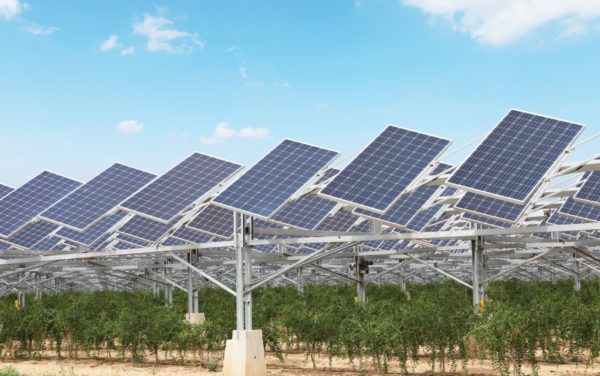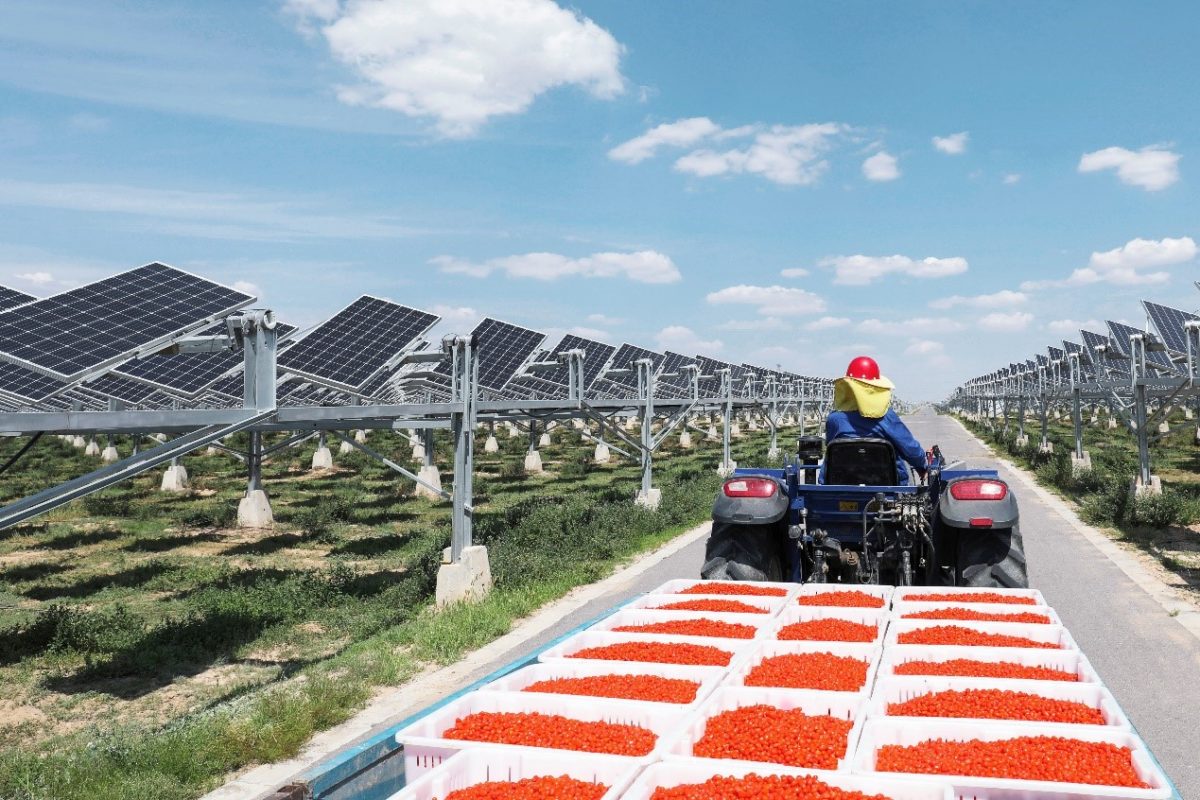Chinese internet information services provider Baofeng Group is expanding the capacity of a 640 MW solar park in the Binhe New District on the eastern banks of the Yellow River in the Ningxia Province to 1 GW. In this giant project, the company is combining PV power generation with the production of goji berries, which are an ingredient in traditional Chinese, Korean, Vietnamese and Japanese medicine.
A spokesperson from Chinese inverter maker Huawei, which is providing its products for the project, told pv magazine that the Baofeng Group began managing 107 square kilometers of desertified land in the area 2014, and that it initially planted alfalfa to improve the soil. The perennial flowering plant was then removed to enable the construction of the solar plants and, upon its completion, goji berries were planted underneath the panels. “This helped resume goji farming in the region, which in turn revived an otherwise dead expanse of desert,” the spokeperson said.

Image: Huawei
The first 640 MW section of the project, which relies on 13,000 Huawei smart string inverters, was grid-connected under China's feed-in program for solar energy in 2016. According to Huawei, the facility was built in a sustainable way.
“The ecosystem in this region has improved, the number of small wild animals has increased significantly, like sparrows, hares and pheasants,” Huawei representative added. The solar power plant is said to effectively reduce land moisture evaporation by between 30 and 40%. The vegetation coverage has purportedly increased by 85% while significantly improving the regional climate. “All the plantation use the drip irrigation because that area has very little precipitation,” the spokesperson further explained.
The panels were installed at a height of 2.9 m, which not only offers enough room for the cultivation of goji berries, but also ensures optimal operation and maintenance activities, the company claims, adding that Baofeng uses drones and Huawei Smart Management System for the plant inspection.
When the remaining 360 MW section of the plant will be grid-connected was not specified.
According to a recent study from the United States, PV projects linked to agriculture have thus far shown the highest potential when combined with leafy greens such as lettuce and spinach, as well as with root crops such as potatoes, radishes, beets and carrots. The authors of the paper, however, also believe that a combination such as strawberries, blueberries, raspberries and lingonberries could also provide for strong power and crop yields. “But we haven’t checked this yet,” they said. “On the ‘likely not a good idea’ side are tall crops that may interfere more with the panels like corn or orchard crops.”
Another study from the University of Arizona stated that the shade from solar panels growing crops can help produce to two or three times more fruit and vegetables than conventional agriculture setups. The group presented the results of a multi-year research project investigating how chiltepin peppers, jalapenos and cherry tomato plants grew in the shade of PV panels in a dry location.
German renewable energy company BayWa r.e. and its Dutch subsidiary, GroenLeven, are building five pilot agrivoltaic power projects in the Netherlands, where they are testing five different types of crops: blueberries, red currants, raspberries, strawberries and blackberries.
This content is protected by copyright and may not be reused. If you want to cooperate with us and would like to reuse some of our content, please contact: editors@pv-magazine.com.




Excellent work, hats off to Chinese authorities for being such an incredible creative thinkful work to address the rising global worming of the planet.
One of marvellous project..the way tapping of energy as well as effective use of resources and enhancing productivity of land are highly commended
Great job! I commend the Chinese authorities for their impressive and innovative efforts to combat global warming. One particularly impressive project involves tapping into energy sources, optimizing the use of resources, and improving the productivity of land. These initiatives are truly remarkable and deserve recognition.